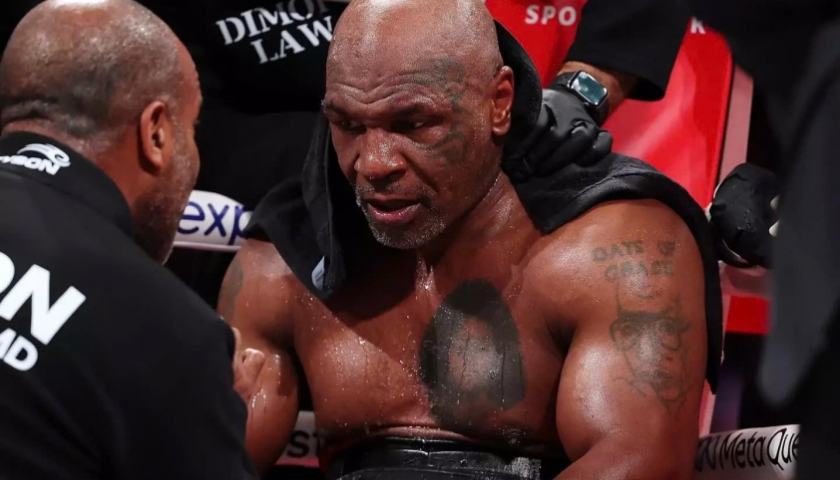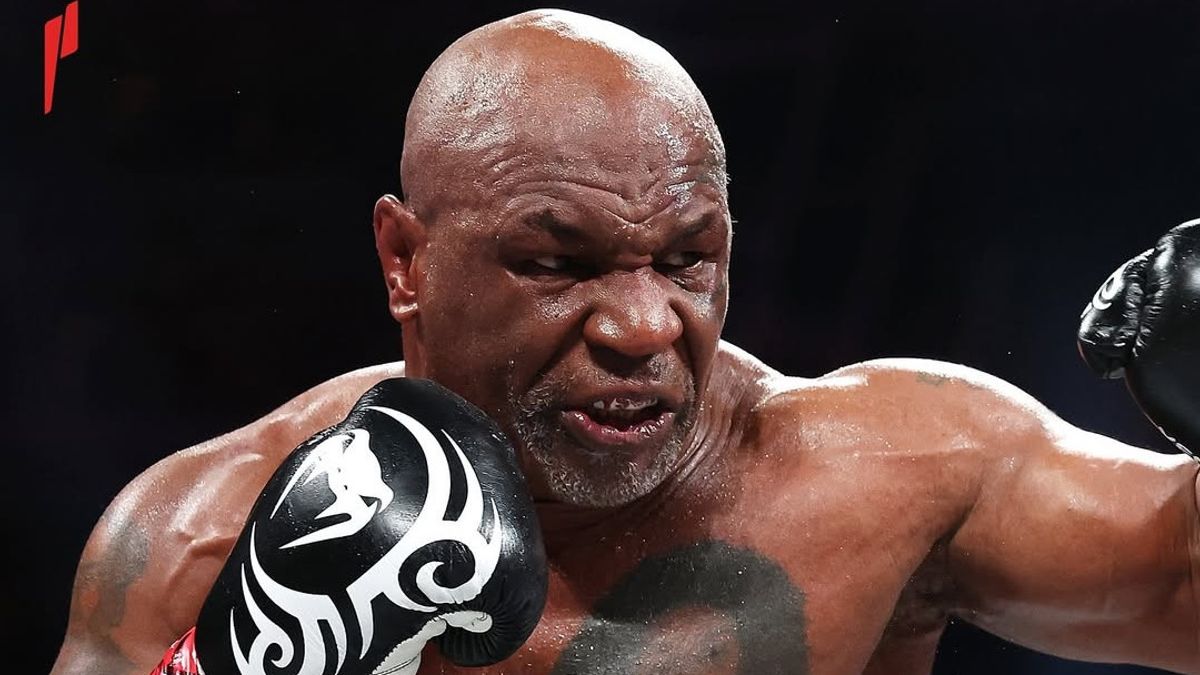After his traumatic childhood in Brooklyn, and before becoming undisputed heavyweight champion, Mike Tyson lived and fought in the Capital Region in the 1980s.
This is no secret. Tyson’s story has been told extensively, including with his 2014 autobiography.
But author Mark Kriegel takes a fresh look at Tyson’s formative years in his new book, “Baddest Man: The Making of Mike Tyson,” which goes on sale Tuesday.

“I do get the sense that, at least in his young life, he may have been happiest cruising around Albany in a beat-up car with (friend) Rory Holloway, going into Sal DiCarlo’s strip joint,” Kriegel said from his home in Santa Monica, Calif. “He’s in this time of his life where he’s just famous enough – and when you have the kind of fame he has (now), it’s a disease. But when he was still in Albany, his public loved him, but it was still contained. He was just becoming a national figure.”
Discovered by ex-boxer Bobby Stewart at the Tryon School for Boys juvenile facility in Johnstown, Tyson began training in 1980 under legendary trainer Cus D’Amato at his gym in Catskill. He lived with D’Amato and Camille Ewald, D’Amato’s partner, at their house in nearby Athens. D’Amato died in 1985.
Tyson made his professional debut on March 6, 1985 with a first-round knockout of Hector Mercedes at Empire State Plaza Convention Center in Albany. He won 11 fights – 10 by knockout – in the Capital Region. His old-school style and devastating power thrilled packed houses in Albany, the Latham Coliseum, Houston Field House in Troy and the Glens Falls Civic Center.

Kriegel, a former sports columnist for the New York Post and the Daily News, didn’t cover Tyson’s early bouts. His beats were police and courts for the Daily News. He wrote about Tyson’s tumultuous marriage to actress Robin Givens. After switching to sports, Kriegel covered Tyson’s rape conviction in 1992. He wrote about Tyson’s later career, including the infamous biting of Evander Holyfield’s ear in 1997.
“I loved him as a villain in my columns,” Kriegel said. “But I do like him now.”
Kriegel said he was left in tears by Tyson’s one-man show on Broadway in 2012. He noted Tyson’s financial generosity toward other boxers, whom Tyson considers family. Kriegel maintains Tyson was exploited by everyone around him, with the exception of Stewart.
Nevertheless, when publisher Penguin Press first approached Kriegel about writing a Tyson book, his response was, “Hell no.”
“I really wasn’t keen on revisiting those years of my excesses as a columnist, learning how to write,” Kriegel said.
But Kriegel – who has also written biographies on Hall of Fame quarterback Joe Namath, legendary basketball player Pete Maravich and boxer Ray Mancini – still owed Penguin a book from an advance on an unfinished project. He proposed writing a shorter essay on Tyson, but that grew into “Baddest Man,” which is 380 pages and covers Tyson’s life from his troubled upbringing in the Brownsville neighborhood of Brooklyn to his devastating 91-second knockout of Michael Spinks in 1988 in Atlantic City, N.J.
“One of the reasons why it changed,” Kriegel said, “is that he (Tyson) generates so much more story than anyone I’ve ever written about.”
Kriegel, who started work on the book in 2021, conducted interviews with more than 100 sources for “Baddest Man.” Though he did not ask to interview Tyson, Kriegel spoke twice with Tyson and his wife, Kiki, by Zoom. They agreed to allow Kriegel to do his book “unencumbered” by giving prospective sources permission to speak with him.
“I know that writing his autobiography (“Undisputed Truth: My Autobiography”) was a really painful process for him,” Kriegel said. “I had no expectation that we were going to sit down for hours and hours, and redo his life story.”

Kriegel’s book opens with current-day Tyson watching his daughter, one of his seven surviving children, playing tennis in Newport Beach, Calif.
“I came to the realization that there’s virtue, if nothing else, in him being here, much less a father, and the way he turned out,” Kriegel said. “He didn’t anticipate being alive and he certainly couldn’t have anticipated, if he were alive, that he’d be loved in this kind of way.”
Kriegel is working on a second Tyson book, which will pick up where “Baddest Man” ends.
Kriegel, who is also an ESPN boxing analyst and essayist, will appear at 1 p.m. Friday at the International Boxing Hall of Fame in Canastota to discuss “Baddest Man” in a moderated talk.
News
El desastre del Eastland sigue siendo uno de los misterios más impactantes y menos conocidos de la historia marítima. En cuestión de minutos, 844 personas perdieron la vida cuando el barco volcó en el río Chicago, superando incluso el número de víctimas del Titanic. Sin embargo, a diferencia de otras tragedias famosas, el desastre del Eastland fue discretamente censurado y rápidamente olvidado por la opinión pública. Hasta hoy, muchos se preguntan por qué este terrible suceso no ocupa un lugar más destacado en la memoria colectiva.
En una mañana lluviosa de julio de 1915, el río Chicago fue escenario de una de las mayores tragedias marítimas…
La tumba helada del Everest finalmente ha sido revelada: inquietantes fotografías capturan los momentos finales de la familia Yamamoto durante una tormenta en 1988. Estas desgarradoras imágenes muestran la lucha desesperada de la familia contra el frío glacial y los vientos feroces, proporcionando una visión conmovedora de uno de los períodos más trágicos en la historia del montañismo.
En 2016, el hallazgo de los restos congelados de la familia Yamamoto en las implacables laderas del Monte Everest resolvió…
Una niña desapareció mientras hacía senderismo, y cuatro años después, lo encontrado sigue desconcertando a los investigadores hasta el día de hoy. Las circunstancias de su descubrimiento y el misterio que rodea su desaparición siguen planteando preguntas sin respuesta.
En una crujiente mañana de octubre de 2021, la familia Carlson se dirigió a lo que se suponía que era…
O hay algo inquietante en esta foto: lo que parece ser un popular retrato familiar del siglo XX en realidad contiene evidencia de un crimen brutal.
En los tranquilos paisajes rurales de Carolina del Norte, un retrato familiar en blanco y negro tomado en 1929 capturado…
Un clip filtrado de 30 segundos muestra a dos aviones dando vueltas alrededor de un platillo volador en el cielo, una escena que fue descubierta utilizando Google Earth en la Antártida. Esta sorprendente grabación ha generado gran interés y debate en las redes sociales.
La vasta extensión helada de la Antártida ha sido durante mucho tiempo un lienzo para misterios y teorías de conspiración….
Una familia afroamericana que perdió su hogar en 1985 fue encontrada en una casa secreta nueve años después.
Una familia negra vomitó de su casa en 1985 – 9 años después fueron atrapados en una casa secreta |…
End of content
No more pages to load











